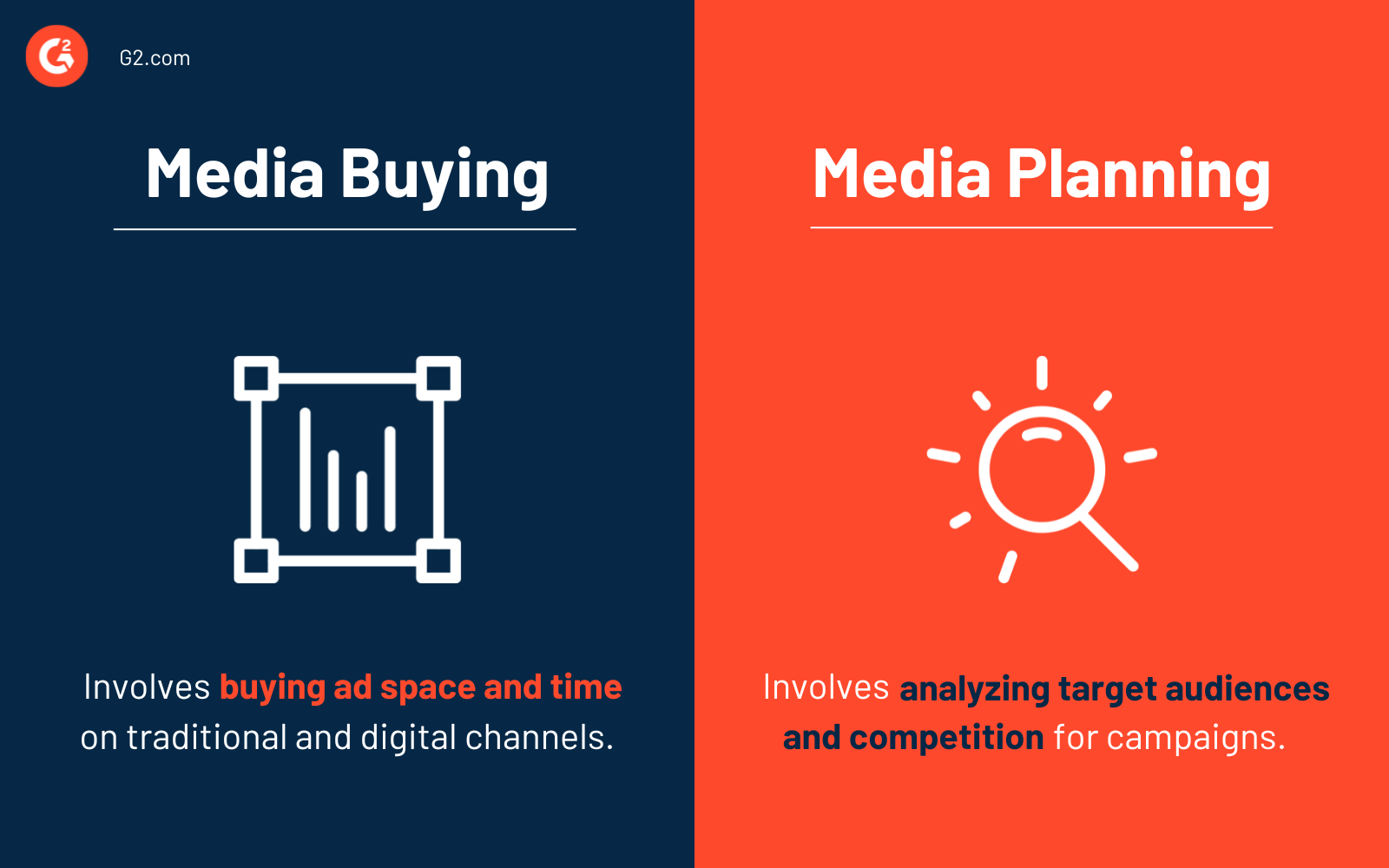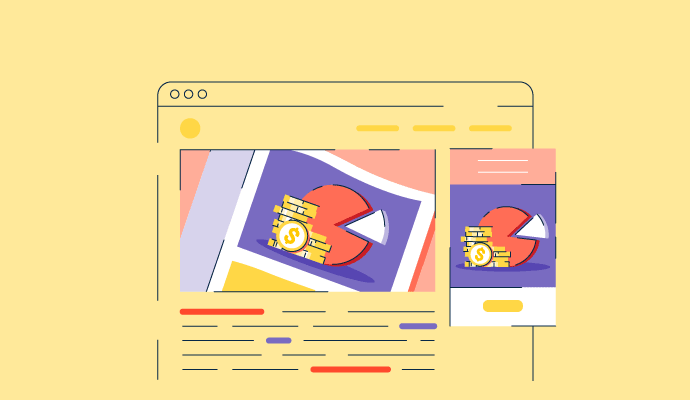Poster ads on the train, Twitter ads on your feed, and Spotify ads while you listen to your playlist.
Advertising campaigns and display ads are everywhere. The volume of advertisements is arguably out of control. Yes, they can be annoying. But you can’t get away from them. Did you ever stop to think about all of the work it takes to get those advertisements there in the first place? Companies rely on digital advertising solutions like supply-side platforms (SSP), demand-side platforms (DSP), or publisher ad server software for media buying and selling.
What is media buying?
Media buying in paid marketing or advertising involves researching and buying ad space and time on traditional marketing channels (television, print, and radio) and digital advertising platforms (websites, social media, apps, and streaming) relevant to a company’s target audience.
Media buying is basically making the media plan happen — which includes researching media buying strategy, requesting proposals, placing insertion orders (IOs), paying vendor bills, and reporting performance.
A media buyer's goal is to ensure an ad campaign gets the most exposure possible in the target market while spending the least. Effective media buying also requires ad price negotiation and extensive research on ad placement venues.
Marketing strategy agencies are great to partner with if you don’t have an in-house media buyer. They’ll help you with your current marketing efforts, determine their effectiveness, and help your company come up with newer, effective strategies if necessary, including optimal media buying strategies.
Importance of media buying
Strategic media buying uses digital and display advertising to drive results. Explore what you can get for clients and stakeholders with an experienced media buying team.
- Reach your audiences when and where it matters. With media buying, you can ensure your brand is visible to potential customers at the right place and time, whether you want it to appear on billboards or in their social media feeds.
- Unlock higher return on investment (ROI). Media buying goes beyond the financial transaction for ad spaces. Media buying professionals with extensive networks help you get the right price, whether it's for a brand awareness campaign or more leads. Plus, they can get you freebies like free impression tracking from media companies they've worked with before.
- Boost visibility with the best slots. Media buyers are aware of media buying trends, enabling them to figure out optimal ad placements that bring the most engagement at a low cost. Plus, they can influence ad space availability and ad placements during major events.
Next, let’s look at digital media buying options that automate impression purchases.
Möchten Sie mehr über Digitale Werbetechnologie erfahren? Erkunden Sie Digitale Werbetechnologie Produkte.
Types of media buying
Apart from the traditional route of buying ads directly from a channel or website, there are three digital media buying options available.
1. Demand-side platforms
Demand-side platforms enable ad agencies and advertisers to buy ad placements, set up campaigns, and optimize ad performance. These solutions feature advertiser campaign management products to help you seamlessly manage ads across search, social, display, mobile, and video advertising platforms.
2. Supply-side platforms
Supply-side platforms are networks where publishers sell ad inventory and make money based on visitors or impressions. These platforms help advertisers understand advertising demand by sharing insights on individual impressions.
3. Ad exchanges
These marketplaces are where publishers and advertisers connect to sell and buy ad inventory. Ad exchanges use real-time bidding (RTB) to facilitate programmatic media buying and selling.
Media buying and planning
Media buying is about getting the most impressions from the right audience at the lowest price. Media planning, on the other hand, takes care of everything between campaign conception and execution. Let's explore what is media buying vs. media planning.
Media buying is about getting the best traditional or digital ad space deal across channels of your choice. Media buyers also actively engage in manual bidding and tweak budgets for maximum return.

Media planning involves setting strategic campaign goals tailored to the target audience based on competitor analysis. Media planners work closely with media buyers to achieve maximum efficiency for ad campaigns.
Media buying strategy
Check out the critical steps that you should follow while buying media.
Pre-placement research
Advertising isn’t as simple as making a really good-looking ad design and slapping it up on a wall. There’s an entire strategy that is put in place. Coming up with that media buying strategy often takes the most time, as there are several factors to consider.
- How will you reach your target audience? Identifying your target audience demographics and creating a customer profile or two are things that you should do first. Market segmentation will help you to understand target groups and how they make their decisions.
- How will you stand out from the competition? Once you’ve figured out who your audience is and what platforms they use, take a look at people that your brand might consider to be competitors. Learn more about what’s worked or not for them in the past so you know where to spend or not.
- How will you strategize? Once you have a solid understanding of your audience, marketing goals, and the competition, it’s time to figure out where you will place your media. Choose mediums that align well with campaign goals and reach target audiences as they look for products or services you sell.
Commercials can be placed online, on TV, or in movie theaters; print advertisements can be placed in magazines and newspapers. Then there’s the radio, billboards, online banner ads, paid search, and social media – we could go on forever.
Even more challenging is realizing that there are subsections within some of these mediums. What channels of TV and radio will you advertise on? What types of magazines will your print ads be placed in? What kinds of websites will your banner ads show up on?
As you’re weighing out all of your options, keep your budget in mind. If your budget is limitless, congratulations! If not, work with your team to prioritize what mediums should be focused on.
Price negotiation
When looking to purchase an expensive product, smart shoppers don’t stop after one store. They’ll jump from place to place, read online reviews, and compare prices.
Media buyers have to be smart shoppers, too. Looking for the best deal on the spot, regardless of the medium, is only the beginning. If you have a previous relationship with a media vendor, it can’t hurt to ask about discounts or bonuses. Keep an eye out for hidden online fees, and make sure your budget is adjusted appropriately. Every dollar counts.
Ad placement
You’ve found your target audience and discovered where they will most likely interact with your campaign. You’ve met with vendors and decided on the ones that are priced the best and located in the optimal spots. Let’s do this thing.
In this phase, media buyers make sure that the media is actually delivered to the vendor and that the vendor fulfills the requests that have been made. The buyer is responsible for making sure that the ad actually appears where it was paid to appear and is in the right environment.
It’s always best to prepare for the worst. If your advertisements aren’t doing well in one place, move them elsewhere. If they’re getting more interaction at certain times of the day, adjust settings and your budget accordingly. Constant review and reevaluation are necessary. Nothing is set in stone.
Measuring advertising effectiveness
When working with a media buyer, this is a good point to touch base with them and look at the data. Were the places you chose to put your advertisements effective? What worked well? What could have been better? Was too much money spent in one place and not enough in another? Search for both negative and positive patterns, and make a note so that your next campaign runs even better than the last.
Media buying process
Quite often, media buying agencies or marketers follow the below-mentioned media buying process.
- Set the budget so you know how much you can spend on the media inventory.
- Send requests for proposals (RFPs) to digital or traditional media outlets of your choice.
- Finalize media orders and submit an insertion order (IO) to these outlets.
- Design creatives as per advertising space specifications and send them to media outlets.
- Launch ad campaigns with a DSP or SSP platform.
- Monitor marketing key performance indicators (KPIs) and metrics to see if you’re hitting campaign goals.
- Check and optimize ad spending for underperforming ads.
Media buying tips:
- Know your campaign inside and out. Consider evaluating industry ad rates and ad placement rates based on the ad formats you wish to run.
- Do your research about the media outlet to assess whether the ads will be contextual and relevant for your target audience.
- Bid right. It’s always a good idea to bid in alignment with customer journey stages. Also, consider adjusting ad frequency and bids for maximum performance. Consider automating programmatic buying optimization for programmatic advertising.
- Be careful with budget calculation. Ideally, you want to keep a separate budget for premium locations that deliver more ROI. But also prepare for unforeseen budget changes in case of running ads on multiple media channels.
- Avoid disconnected messaging. Make sure ads tell a complete and compelling story across the entire media mix of your choice.
- Focus on attribution. Consider fine-tuning digital media campaigns while they’re in flight instead of waiting till the end.
Buying media the right way
Mindlessly placing your advertisements might work, but strategizing first will almost definitely work better. If you’re working with a media buyer for the first time, don’t be afraid to ask questions and make mistakes. The entire operation is a learning experience because when one campaign ends, another begins.
Leverage audience intelligence platforms to gain in-depth insights into your target audiences before buying media.
This article was originally published in 2019. It has been updated with new information.

Daniella Alscher
Daniella Alscher is a Brand Designer for G2. When she's not reading or writing, she's spending time with her dog, watching a true crime documentary on Netflix, or trying to learn something completely new. (she/her/hers)

